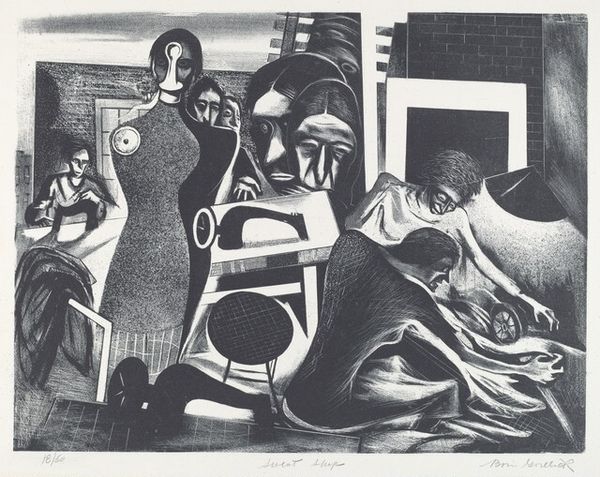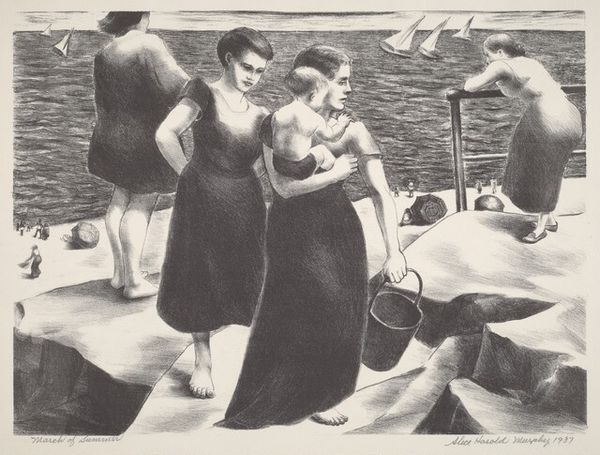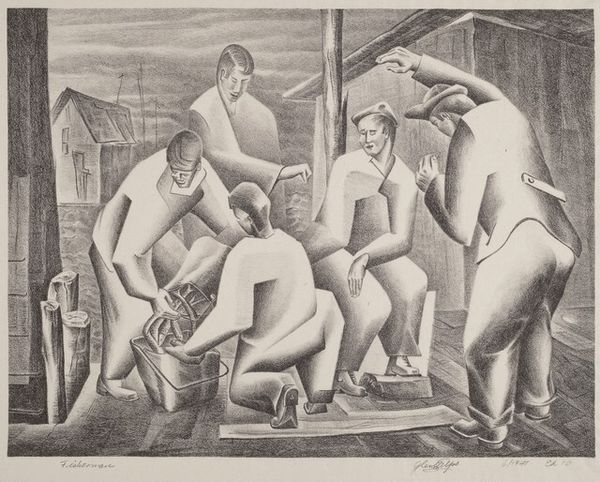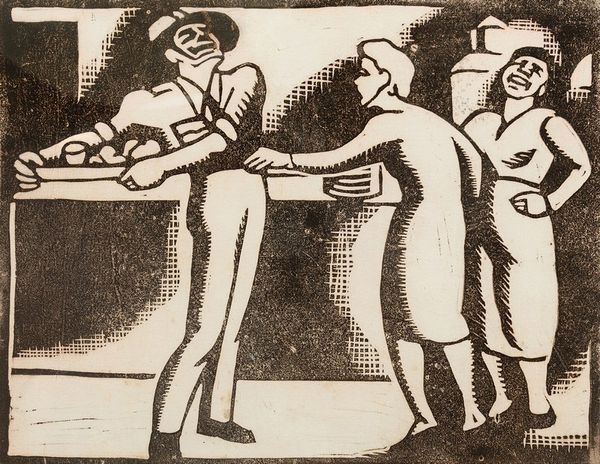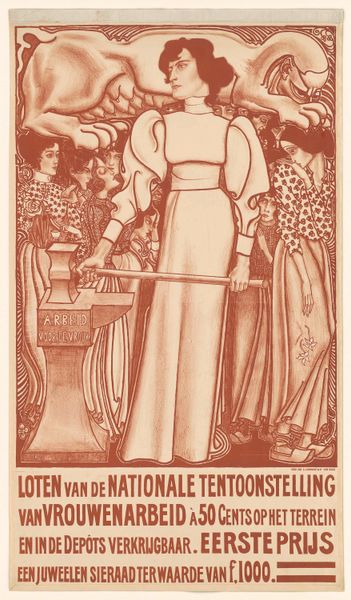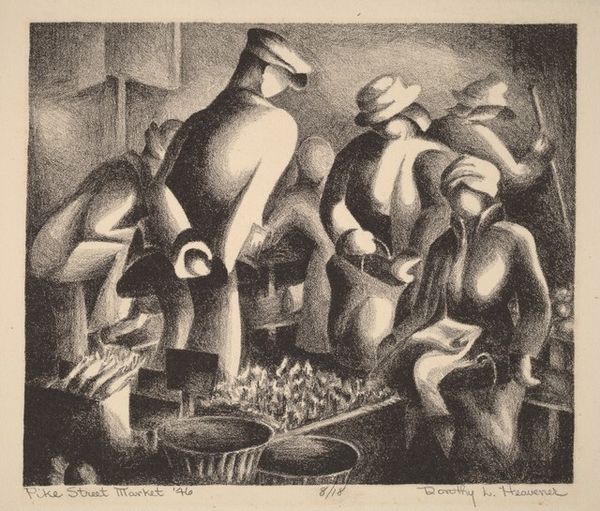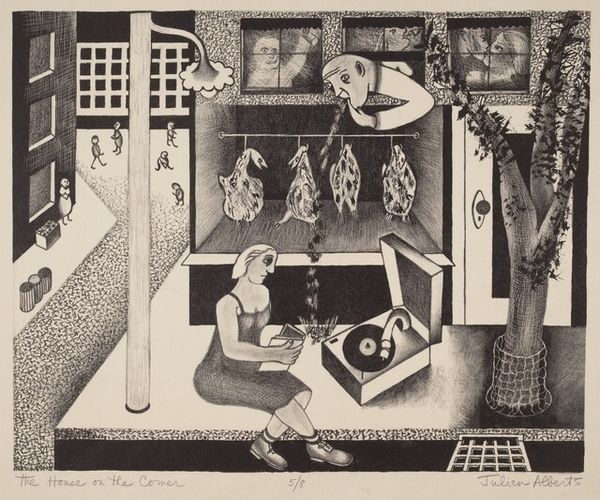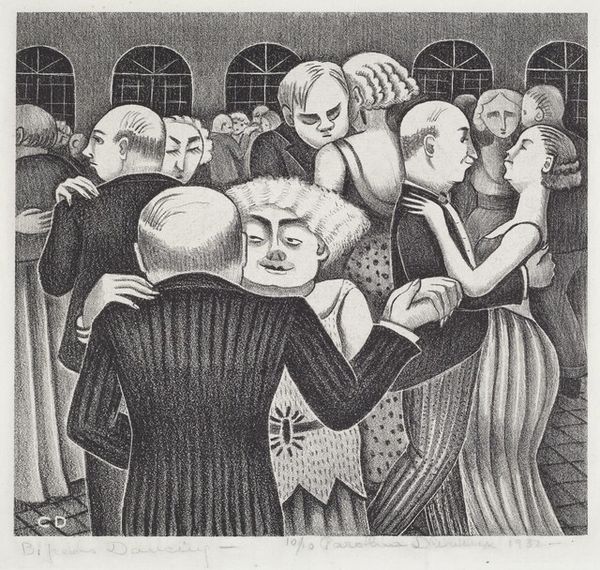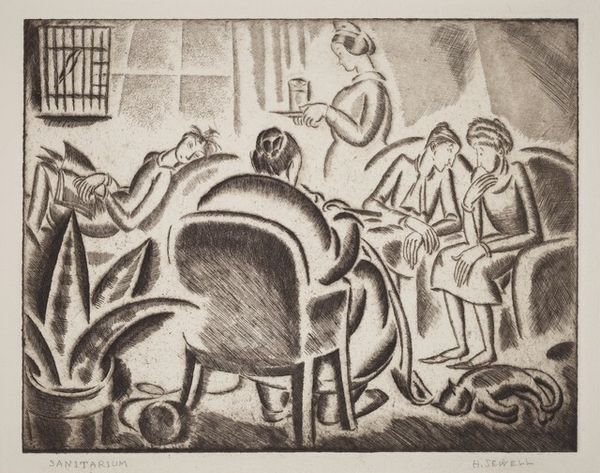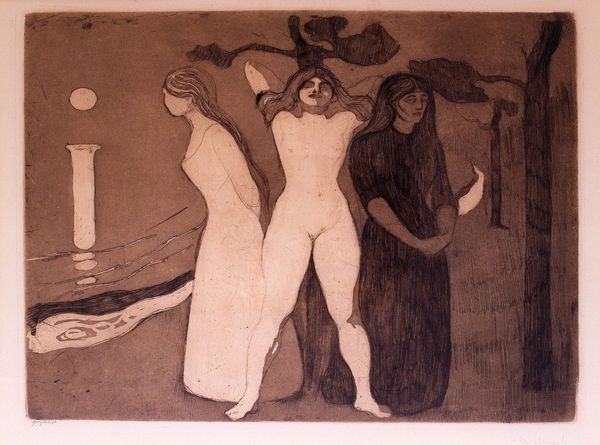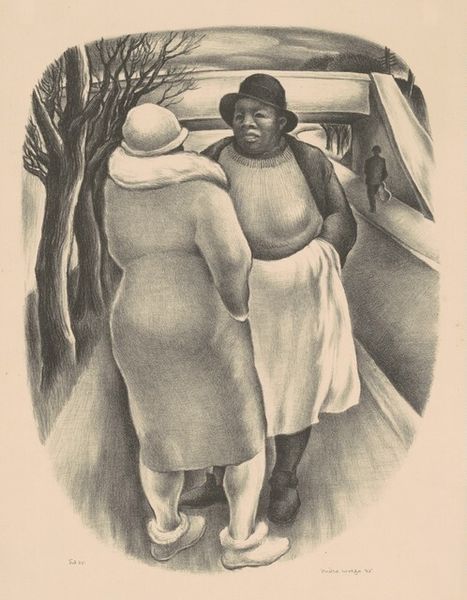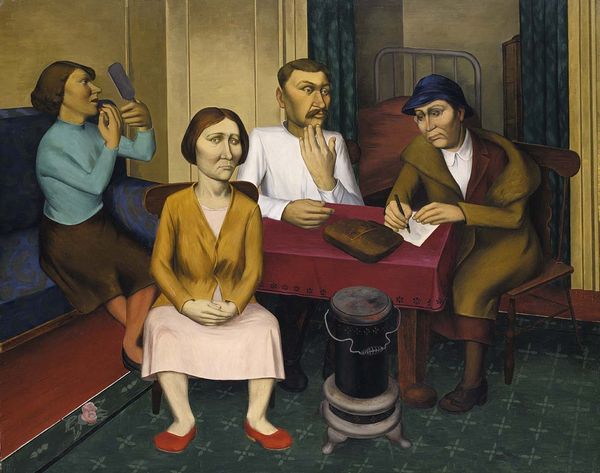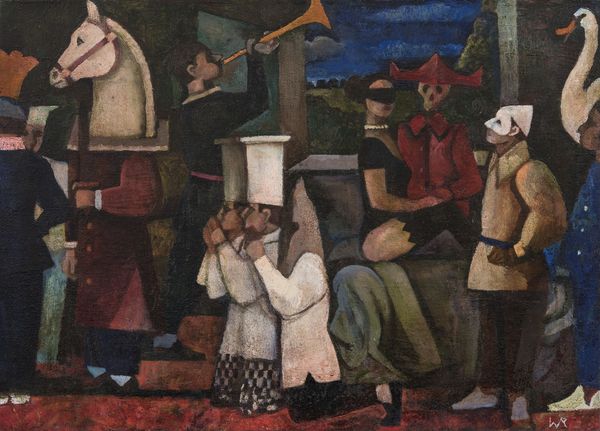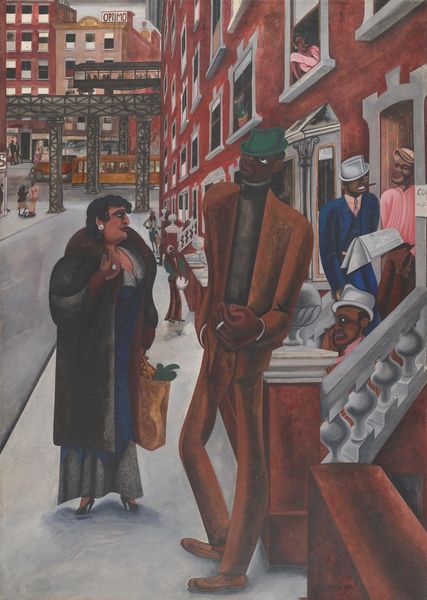
drawing, charcoal
#
portrait
#
drawing
#
narrative-art
#
charcoal drawing
#
figuration
#
charcoal art
#
surrealism
#
portrait drawing
#
genre-painting
#
charcoal
#
surrealism
#
portrait art
#
fine art portrait
Copyright: Paul Feeley,Fair Use
Editor: This is Paul Feeley's "The Psychologist," a charcoal drawing from 1935. It's striking, with all these different figures crammed into one composition. What strikes me most is the clear juxtaposition of, what seems to be, mental health versus illness. How do you interpret this work? Curator: The positioning of the central, static figure, presumably "the psychologist," rigidly separating the domestic sphere from the chaotic surge of disturbing figures on the right, immediately evokes the historical and social context of mental healthcare in the 1930s. Consider the stark divide: respectability and family on one side, a horde of demonic entities on the other, barely held back from the "normal" world. Doesn’t it feel like a manifestation of societal anxieties around mental illness? Editor: I see what you mean. There’s this sense of the psychologist policing the boundary between sanity and… otherness, but what about the framing, like she’s behind a counter, maybe? Curator: Precisely! The "counter," you called it, presents us with the clinical distance that was often employed, sometimes brutally, under the guise of scientific objectivity. Those books she stands behind are the knowledge which she has at her disposal, power in a gendered sense. Where do you think this image places women in this time period? Editor: Thinking about it that way, it seems to suggest a limited role for women, perhaps constrained to the domestic sphere unless acting as a gatekeeper, perpetuating established power structures even within a helping profession. This work makes a profound statement about control. Curator: Indeed. By situating mental healthcare within this framework, Feeley compels us to confront not only the treatment of mental illness, but the societal structures that contribute to its definition. Editor: I hadn’t thought of it in such broad, societal terms before. I now appreciate how the artist critiques existing gender and power dynamics using what seems at first to be a portrait! Curator: Art provides the chance to consider how all those elements can be read and interrogated. Hopefully we have given our audience new tools to start that investigation for themselves.
Comments
No comments
Be the first to comment and join the conversation on the ultimate creative platform.
